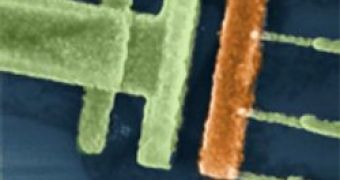Everybody knows refrigerators are indispensable household appliances that transfer heat from inside it to the external environment, cooling the contents to a temperature below ambient. But while commercial refrigerators get bigger to fit more food and drinks, a group of scientists worked on developing the smallest one in the world.
It won't be used to chill beer or champagne, but it could do that for tiny x-ray sensors that probe cold dust and gas in the cosmos. Maybe it could one day be perfected to be integrated into larger electronic devices, like laptops, to eliminate the need for large coolers, but for now it only works on the nanoscale.
Currently used transistors, much like the ones incorporated in computer chips, all depend on the flow of electricity between thin layers of superconductors. These are called logic gates and use small increases in voltage to flip the electrons on and off. However, the new transistor, developed by physicists at the Helsinki University of Technology in Finland, led by Jukka Pekola, is the first of its kind that can actually control heat flow. In it, electrons transfer from the superconductor to a copper island, then more energetic electrons tunnel back to the superconductor by increasing their energy levels.
This is done by adjusting the voltage, so that the less energetic electrons are left behind on the copper island, which is thus cooled to around 0.1 Kelvin, (-273 degrees Celsius). This temperature is the lowest ever achieved by this method and even the currently used helium-3 cooling method can't match it, producing a temperature of only 0.3 Kelvin (-272.3 C).
"The field of refrigeration at 0.1 Kelvin is very useful--certain sensors work very well at extremely low temperatures," says physicist Joel Ullom at the National Institute of Standards and Technology in Boulder, Colorado.
That is useful in many applications, which actually work better at very low temperatures, producing less thermal noise to confound a signal.

 14 DAY TRIAL //
14 DAY TRIAL //